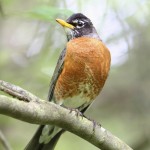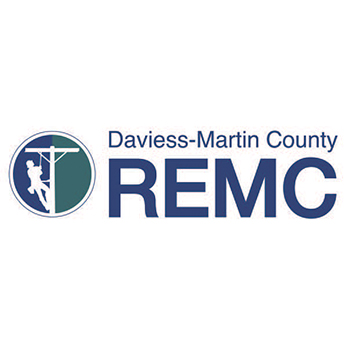By Jack Spaulding
I was a little amazed a few weeks ago when I noticed a flock of about 15 robins sitting in the ash tree behind the house. Robins are not seed feeders and didn’t show up for the sunflower seeds at our bird feeder. I don’t know if they were a small flock from up North finally deciding to migrate to Florida, or just a local gathering of the slouches of the robin clan who stay around all year.
Often when readers observe robins early in the year, they call me or drop me an email to let me know spring is just around the corner. I didn’t get any calls or emails this go around, so perhaps I was the only one who witnessed the rather odd and early appearance.
Usually, the lowly regarded buzzard is a good bet to herald a break in the weather. However, I am giving the premise another thought as I saw one in early January along I-70 east of Terre Haute when there was snow on the ground! Seeing the aerial sanitation engineer surprised me. Buzzards generally hug the line between freezing weather and the thaw and only go south as far as needed to find frost-free carcasses and road kill. With a warming trend, they appear almost instantly. With the Arctic blast we enjoyed in the following weeks, I’m sure this particular buzzard high-tailed it south.
The snow and bitter cold have brought a profusion of visitors to the bird feeding station this year.
The number of cardinals visiting is increasing daily with the last count being nine brilliant colored males. The brightly colored males increase in number well past late February and into March as they are joined by the females. My best count of males last year was 21 with an equal number of females assumed. Some of my readers accused me of hoarding a crimson horde. They are absolutely beautiful!
Among the other visitors to the hanging suet blocks are three Pileated Woodpeckers. I assume they are the mated pair and a young one hatched last year. The largest one I named “Woodrow,” or “Woody” for short. I am sure their ilk was the inspiration for the famous old cartoon. When all three show up, they go through a suet block in record time.
Then, we have a couple of special guests this year … “Cogburn” and “Dumpling.” Cogburn is a beautiful gold and black Bantam rooster and Dumpling is a guinea fowl. They are orphaned birds who made an unfortunately timed escape from their coop just as their owners moved.
Cogburn is named after the venerable John Wayne character, “Rooster Cogburn.” Dumpling got her (or his) name when my wife discovered the two birds scratching in her garden last fall. She said if she got a hold of them, they would be “chicken and dumplings.” Needless to say, when I heard her comment, the name Dumpling stuck. She has since softened her opinion on the orphaned birds.
With Cogburn and Dumpling on board, I added cracked corn and small bird seed to the menu underneath the feeding station bringing in an even greater variety of ground feeding birds.
We also have “Earl,” the squirrel, and when not hibernating, a couple of chipmunks, “Chip” and “Dale,” snacking on the dropped sunflower seeds.
Now would be a good time to think about putting in a feeding center. As we exit winter, it is a taxing time of year for birds and other critters. The demand for protein is at an all time high as they battle the continuing cold. Adding to the severity of the situation is the fact most of the wild forage seeds have been eaten, and a meal is hard to come by.
A while back, I saw a mature red-tailed hawk dining on carrion alongside of the interstate. Showing no fear of the passing traffic as it ate, the bird’s meal looked to be a relatively freshly killed raccoon. Seeing a red-tailed hawk eating something other than prey they have killed is a rare sight. You’re much more likely to see the symbol of our nation, the bald eagle, dining on road kill than a red-tailed hawk.
Jack Spaulding is a state outdoors writer and a consumer of RushShelby Energy living along the Flatrock River in Moscow. Readers with questions or comments can write to him in care of Electric Consumer, P.O. Box 24517, Indianapolis, IN 46224; or email jackspaulding@hughes.net.




